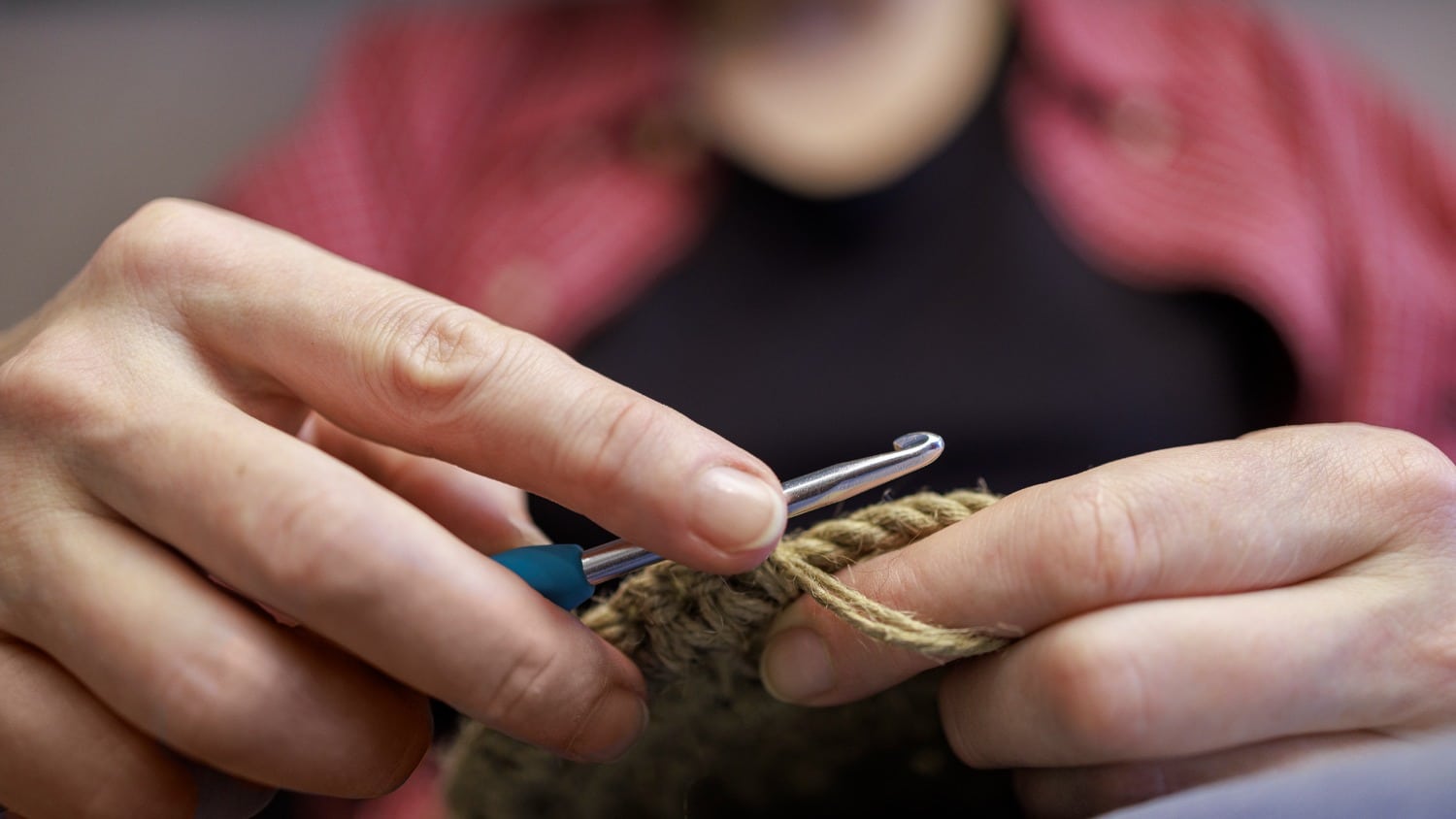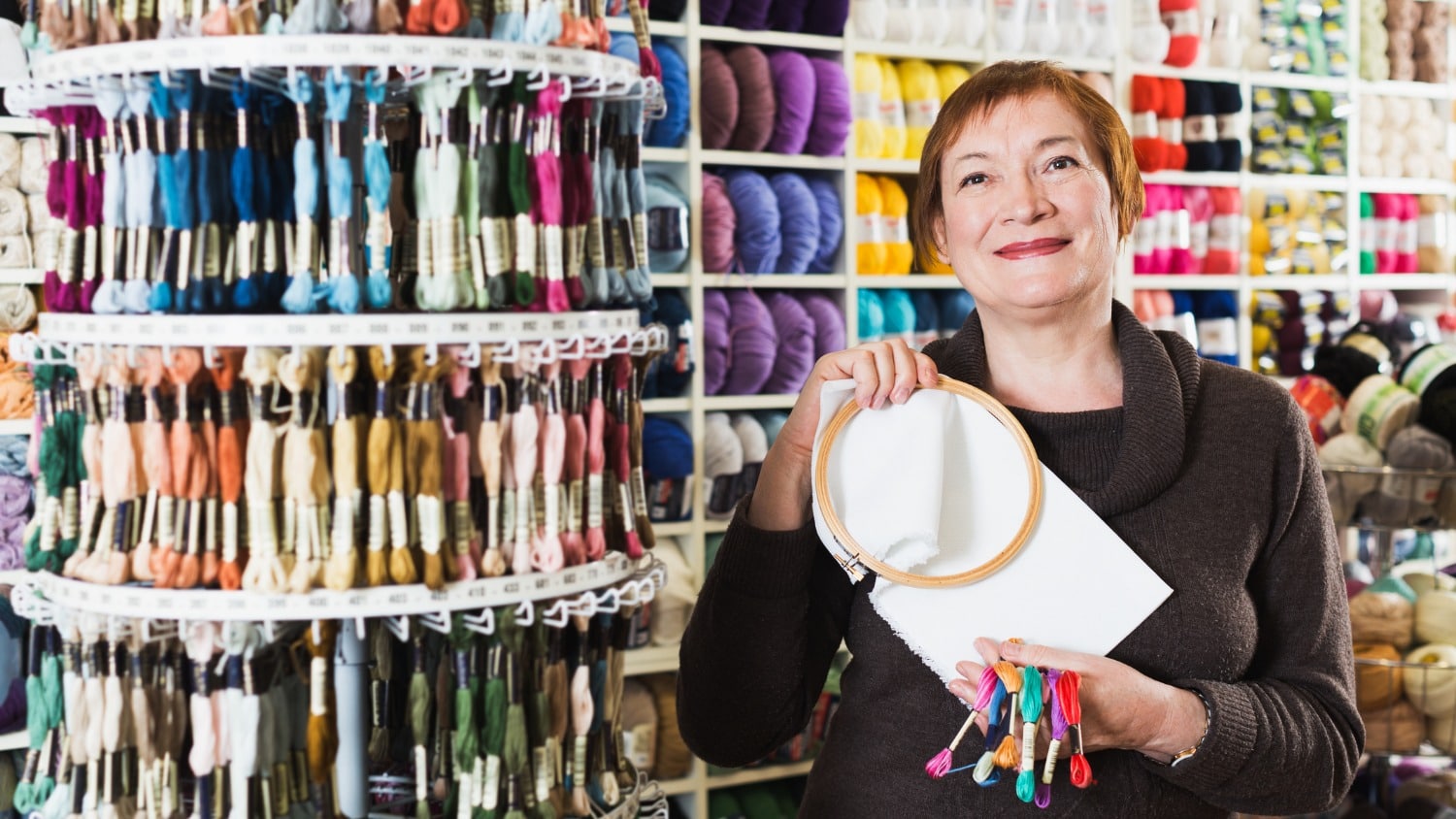
4 Easy Cross-Stitch Patterns for Beginners
Cross-stitching has captivated crafters for centuries with its intricate patterns and the satisfaction of creating something beautiful, stitch by stitch. Whether you’re a seasoned crafter or just starting, cross-stitching provides a delightful way to relax, express your creativity, and produce stunning handcrafted pieces.
You’re in luck if you’re a beginner eager to embark on this creative journey. Below, you’ll find four easy cross-stitch patterns designed for beginners. I selected these patterns specifically to provide a gentle introduction to cross-stitching, allowing you to develop skills and create beautiful works of art. So gather your materials, thread your needle, and let’s dive into the world of cross-stitch together.
Here are 4 cross-stitch patterns that are great for beginners:
- Basic Sampler
- Geometric Shapes
- Small Flowers or Plants
- Cute Animals
Cross-Stitch Supplies Every Beginner Needs
Every beginner needs a few basic supplies to ensure a smooth and enjoyable stitching experience. Here are the essential cross-stitch supplies:
Aida Fabric
Aida fabric is the most common fabric used in cross-stitching. It has evenly spaced holes or squares, which make creating neat and uniform stitches easy. I recommend starting with 14-count Aida fabric, which has 14 holes per inch for beginners.
Embroidery Hoop
An embroidery hoop is a circular wooden or plastic frame that holds the fabric taut and prevents it from wrinkling while stitching. It helps maintain even tension and makes stitching easier. Choose a hoop that comfortably fits your fabric size.
Embroidery Floss
Embroidery floss is the thread used for cross-stitching. It comes in various colors and usually consists of six strands. DMC and Anchor are popular brands that offer high-quality embroidery floss.
Embroidery Needles
Cross-stitch needles have a large eye to accommodate multiple strands of floss and a sharp, pointed tip to easily pierce the fabric. Size 24 or 26 tapestry needles are common for cross-stitching.
Scissors
Sharp, small scissors are essential for cutting floss and trimming threads. Choose scissors with a fine tip to make precise cuts, and dedicate them to cross-stitching to avoid dulling the blades.
Pattern
Choose a pattern that suits your interests and skill level. You can find patterns in books, magazines, or online platforms. Start with simple designs to practice basic stitches before progressing to more complex patterns.
Chart or Pattern Key
A chart or pattern key accompanies the pattern and guides you through the stitching process. It typically includes symbols representing different floss colors and indicates where to place each stitch on the fabric.
Fabric Markers or Highlighters (optional)
Fabric markers or highlighters help mark the center of your fabric or highlight specific stitches on the pattern. This aids in tracking progress and ensures accuracy while stitching.
Simple Projects for Beginners
Basic Sampler
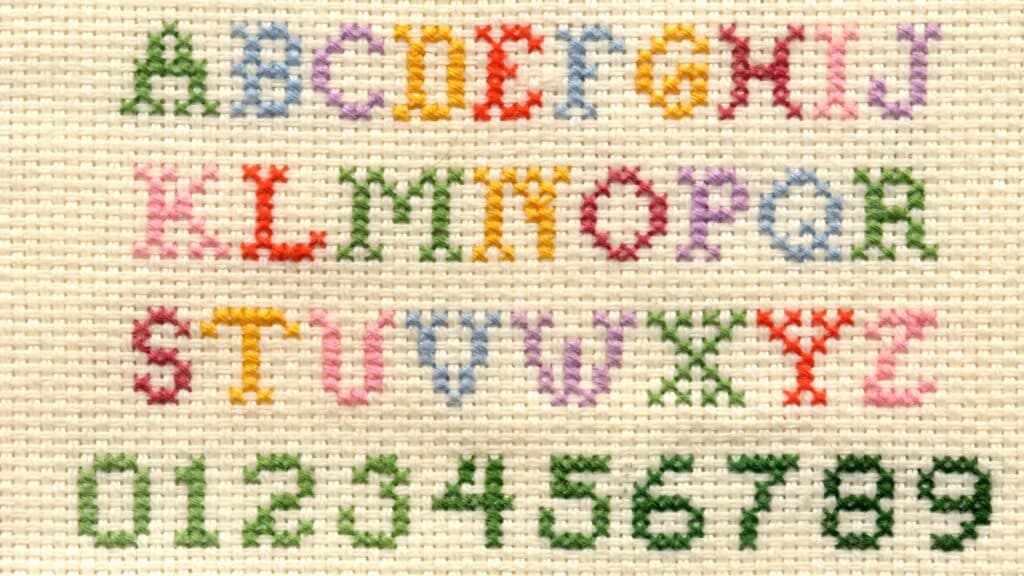
A sampler is a traditional cross-stitch pattern featuring various simple stitches and motifs. It often includes alphabets, numbers, and small designs. Samplers are excellent for practicing basic stitches and getting familiar with the cross-stitch technique.
Materials
Aida fabric, embroidery hoop, embroidery floss, tapestry needle, embroidery scissors.
Instructions
- Start by selecting a basic sampler pattern that includes alphabets, numbers, and small motifs. This free traditional cross-stitch sampler is perfect for beginners!
- Cut a piece of Aida fabric slightly larger than your embroidery hoop and secure it tightly in the hoop.
- Choose a starting point on the fabric, and thread your tapestry needle with the appropriate embroidery floss color.
- Refer to the pattern and stitch the first letter or motif using a basic cross-stitch. Remember to count the fabric threads to ensure accurate placement.
- Continue stitching each letter, number, or motif, following the pattern. Use different colors of floss as required.
- Once you have completed the sampler, secure the loose ends of the floss at the back of the fabric and trim any excess.
- Remove the fabric from the hoop and press it gently using a cool iron. Your basic sampler is now complete!
2. Geometric Shapes

Simple geometric shapes like squares, triangles, circles, or diamonds are another great place to start. You can stitch these shapes in solid colors or use different colors for each section. They provide a great opportunity to practice neat and even stitches while creating a visually pleasing pattern.
Materials
Aida fabric, embroidery hoop, embroidery floss, tapestry needle, embroidery scissors.
Instructions
- Choose a geometric shape you’d like to stitch, such as a square, triangle, circle, or diamond. Check out this Pinterest board for inspiration.
- Cut a piece of Aida fabric large enough to accommodate your chosen design and secure it in the embroidery hoop.
- Decide what color floss you want to use and thread your needle.
- Decide on the size and placement of your shape, counting fabric threads for accuracy.
- Begin stitching by bringing the needle up from the back of the fabric at the starting point.
- Follow a pattern or stitch a series of diagonal stitches across the fabric to form your chosen shape.
- Secure the loose ends of the floss at the back of the fabric and trim any excess.
- Remove the fabric from the hoop and press it gently.
3. Small Flowers or Plants
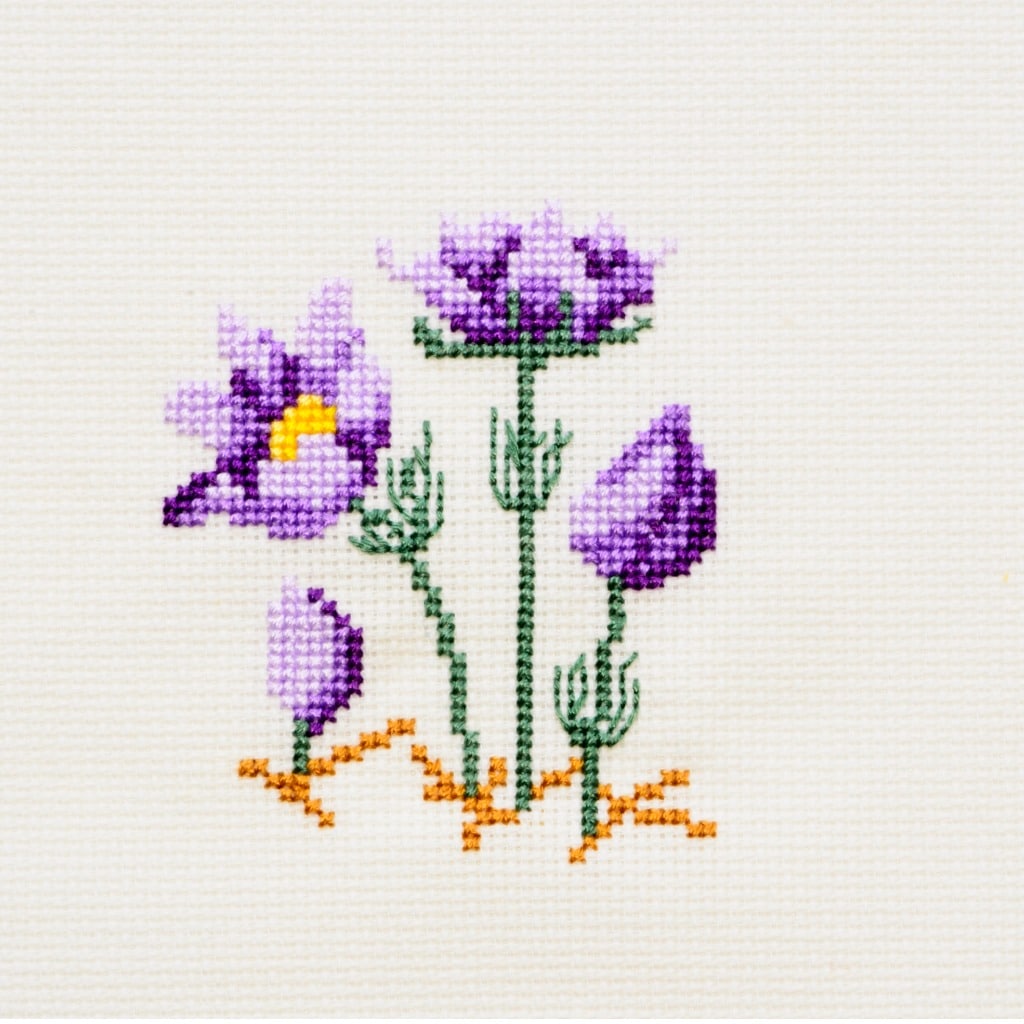
Choose a small flower or plant design with basic shapes, such as a tulip or a leafy branch. These patterns usually involve minimal color changes and simpler stitches, making them ideal for beginners. They allow you to practice stitching curves and adding details to your work.
Materials
Aida fabric, embroidery hoop, embroidery floss, tapestry needle, embroidery scissors.
Instructions
- Choose a small flower or plant design with basic shapes, such as a tulip or leafy branch. This pattern is great for newbies!
- Cut a piece of Aida fabric and secure it in the hoop.
- Thread your needle with the first color of floss.
- Start by stitching the outlines of the flower or plant using a backstitch or a running stitch (or follow the instructions included with your chosen pattern).
- Once the outlines are complete, fill in the shapes with cross-stitches or other appropriate stitches.
- If there are additional details like stems or leaves, stitch those using the appropriate stitches and colors.
- Repeat the process with different colors until you’ve completed the entire design.
- Secure the loose ends and trim any excess.
- Remove your fabric from the hoop and press gently using low heat.
4. Cute Animals
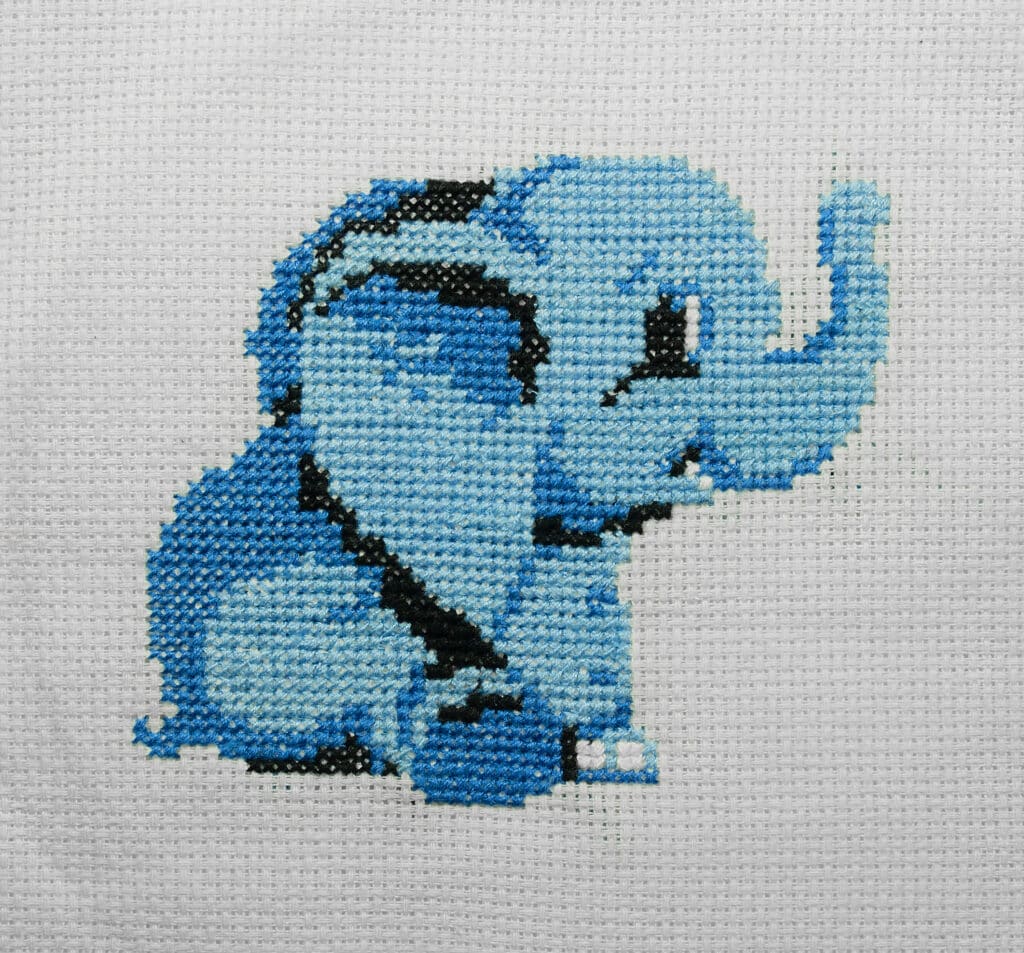
If you want to try stitching a cute animal, look for a design with simple outlines and minimal color changes. These patterns often comprise blocks or sections, making them easier to stitch and gradually helping you develop your skills.
Materials
Aida fabric, embroidery hoop, embroidery floss, tapestry needle, embroidery scissors.
Instructions
- Select a pattern featuring a cute animal with simple outlines, such as a cat, dog, or bunny. This simple fox pattern is adorable and great for beginners.
- Cut your Aida fabric and secure it in the embroidery hoop.
- Thread your needle with the first color of floss.
- Start by stitching the outlines of the animal using a backstitch or a running stitch.
- Fill in the main body of the animal with cross-stitches or other appropriate stitches.
- If additional details like eyes, nose, or ears are needed, stitch those using the appropriate stitches and colors.
- Repeat the process with different colors until you complete the animal design.
- Secure the loose ends and trim any excess.
- Remove the fabric from the hoop, press it gently, and your cute animal pattern is finished!
With these four easy cross-stitch patterns, you can embark on a delightful journey of creativity and self-expression. With patience, practice, and the right tools, you’ll soon be creating beautiful, handcrafted pieces that showcase your newfound skill. Happy stitching!
Let’s Have a Conversation:
What made you decide to try cross-stitch? What tricks have you discovered that help you improve your skills? Do you have any favorite patterns? Please share in the comment section below!
Tags Arts and Crafts





